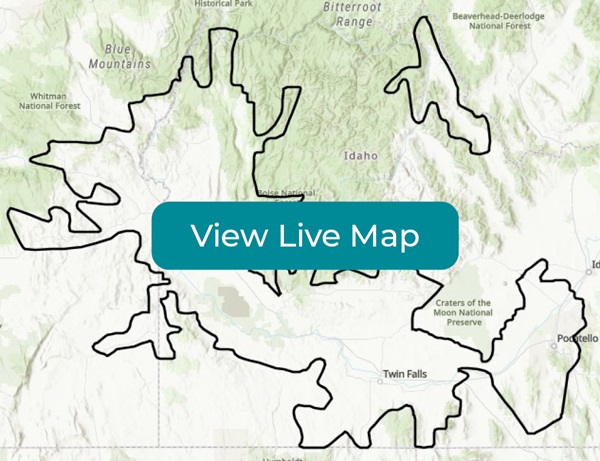A public safety power shutoff, or PSPS, is when a company like Idaho Power temporarily turns off power to an area where wildfire risk is high due to extreme weather conditions. A PSPS can help keep our communities safe. The outage is an effort to prevent sparks that could start a fire if high wind blows debris into our lines or causes other damage.
A PSPS is a last resort to prevent wildfires. From trimming trees to wrapping poles in fire-resistant mesh to maintaining and inspecting our equipment, wildfire mitigation is part of year-round, everyday operations at Idaho Power. During times of elevated fire risk, we can also limit automatic re-energization of tripped lines or increase the sensitivity of devices that automatically de-energize our powerlines. While these measures may result in more frequent or longer outages for customers living in or near wildfire risk zones, it’s an important tool in decreasing wildfire risk and keeping our communities safe.
Where are PSPS events most likely?
Click the image to the right to view a live map of areas currently impacted by a PSPS. This map is subject to change and will be updated during an event to reflect areas that are being monitored for a PSPS or actively in a PSPS outage.
All customers should be prepared for outages, including a PSPS. Customers living in or near wildfire risk zones are more likely to experience a PSPS than others. Idaho Power has identified geographic zones with higher wildfire risk due to factors like vegetation, weather patterns, fire history, and structure density. For example, intense fires are more likely in forested areas than places with only low-growing vegetation like grasses.
In higher risk zones, we have changed operations to reduce the risk of wildfire during the fire season. These zones receive intensive inspection and vegetation management and are subject to special equipment and operational practices to reduce the risk of wildfire.
Customers outside active PSPS areas may also experience outages due to high winds and increased protection settings on our lines that help prevent wildfire ignitions. These settings allow power lines to automatically turn off much more quickly than they normally would when a fault is detected, reducing the chance that debris blowing in the wind will touch the lines and spark a wildfire. As in the case of a PSPS, these outages may last longer than normal since we’ll need to inspect the lines to make sure we can re-energize them safely.
When is a PSPS used?
PSPS events are used only during extreme weather conditions — primarily high winds and dry vegetation — that lead to high fire risk. Many factors go into the decision to call a PSPS. Using forecasts and real-time observations, the following are the primary factors we look at in determining if a PSPS is necessary. PSPS events are NOT a result of customer growth or increasing demand for electricity.

How will customers be notified?
Idaho Power is committed to providing as much advance notice as reasonably possible to help you prepare for a PSPS event. The company’s atmospheric scientists use weather stations to monitor fire conditions throughout our service area. These observations can help us inform customers of potential PSPS conditions.
Due to the size of Idaho Power’s service area, geographic and environmental diversity, and the unpredictable nature of the region’s weather, it can be hard to predict the need for a PSPS with much advance warning. As much as we can, we’ll keep you informed throughout an event using text messages, phone calls, and email. You can also look for updates on our website.
Make sure to update your contact information so we can reach you in an emergency.


